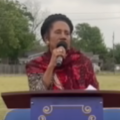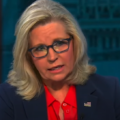In a recent move that has raised more than a few eyebrows, President Biden announced a plan to cancel $1.2 billion in student debt for approximately 153,000 borrowers. This announcement, posted on the official White House website, has sparked a heated debate, with many questioning the true intent behind this decision. Critics argue that this plan, while appearing generous, is a thinly-veiled attempt to garner votes, a strategy that seems both reckless and unfair to many Americans.
At first glance, some might consider the idea of canceling student debt a commendable effort to alleviate the financial burdens of education. However, a closer look at the details of this plan reveals a different story. This relief effort is aimed at a very narrow group of borrowers – those enrolled in the Saving on a Valuable Education (SAVE) repayment plan. To qualify, individuals must have been in repayment for at least 10 years and taken out no more than $12,000 in student loans. This specificity raises questions about the actual impact of the relief and whom it truly benefits.
Kevin O’Leary, a well-known businessman and television personality, has been particularly vocal in criticizing the plan. He argues that this policy is “born in hell,” emphasizing that it creates more problems than it solves. According to him, the plan undermines the value of education as a privilege that comes with responsibilities, including the repayment of student loans.
O’Leary points out the unfairness to past generations who have diligently repaid their debts, those who have worked hard for scholarships, and the 88% of the population who do not have student debt but are now expected to bear the financial burden of this forgiveness. He questions the message this policy sends to these groups, implying that their efforts and financial discipline are less valued.
Furthermore, O’Leary criticizes the timing and prioritization of this policy, highlighting the current economic challenges such as rising living costs and inflation. He suggests that addressing these immediate concerns should take precedence over student loan forgiveness. O’Leary also raises concerns about the political implications, viewing this move as potentially damaging to the Democratic Party, especially in the upcoming midterm elections.
The Supreme Court previously shot down President Biden’s attempts to cancel student debt more broadly. In response, the President claimed to have found a “workaround,” leading to this latest initiative. This workaround, however, appears to target such a small fraction of borrowers that it hardly seems like a solution to the widespread student debt crisis. This move has been criticized as being more of a political ploy than a genuine attempt to address the issue of student debt.
The White House is banking on the public not delving into the details of the plan. By announcing a large figure – $1.2 billion – and a substantial number of beneficiaries – 153,000 borrowers – it could be perceived that the Biden administration is attempting to create an illusion of significant debt relief. This perception, critics argue, is intended to boost the President’s popularity, especially among younger voters who are disproportionately affected by student debt.
Moreover, this plan raises concerns about fairness and the precedent it sets. Canceling debt for a select few while the majority continue to shoulder their financial burdens seems inequitable. It’s not just about who gets their debt forgiven, but also about who does not and why. This selective forgiveness could be seen as penalizing those who chose different repayment plans, took out more than $12,000, or paid off their debts through years of hard work and financial discipline.
A glaring omission in this approach is the failure to address the root cause of the student debt crisis: the outrageously expensive cost of college education. Instead of offering band-aid solutions that shift the financial burden onto taxpayers, a more sustainable approach would be to tackle the escalating costs of higher education. This could involve implementing policies that incentivize colleges to lower tuition fees or finding innovative solutions to make higher education more affordable and accessible. Additionally, there is a need to reinforce the principle of personal responsibility. Those who sign loan agreements should be expected to live up to their obligations, rather than relying on debt forgiveness funded by taxpayers. This shift in focus would not only bring fairness to the system but also ensure long-term solutions that benefit a wider range of students and society as a whole.
President Biden’s latest student debt relief ploy, while ostensibly a step towards easing the financial strain of education, is more of a political bribe than a substantive policy change. By targeting a very specific and small group of borrowers, the plan’s actual impact on the broader student debt crisis is minimal. Furthermore, the perceived unfairness and potential for this move to be seen as a vote-buying tactic only add to the controversy surrounding this decision. The administration’s efforts would be better focused on comprehensive solutions that address the needs of all student loan borrowers, rather than implementing narrow policies that raise more questions than they answer.














The vote buying, debt forgiveness scheme has been a bright, red, flashing light for months! I’m glad a few people are being to see the light. This scheme is only one of many crimes perpetuated by the Obama-biden regime since 2008. Unfortunately, many Americans can’t see past “the first black POTUS in history.”
Truth